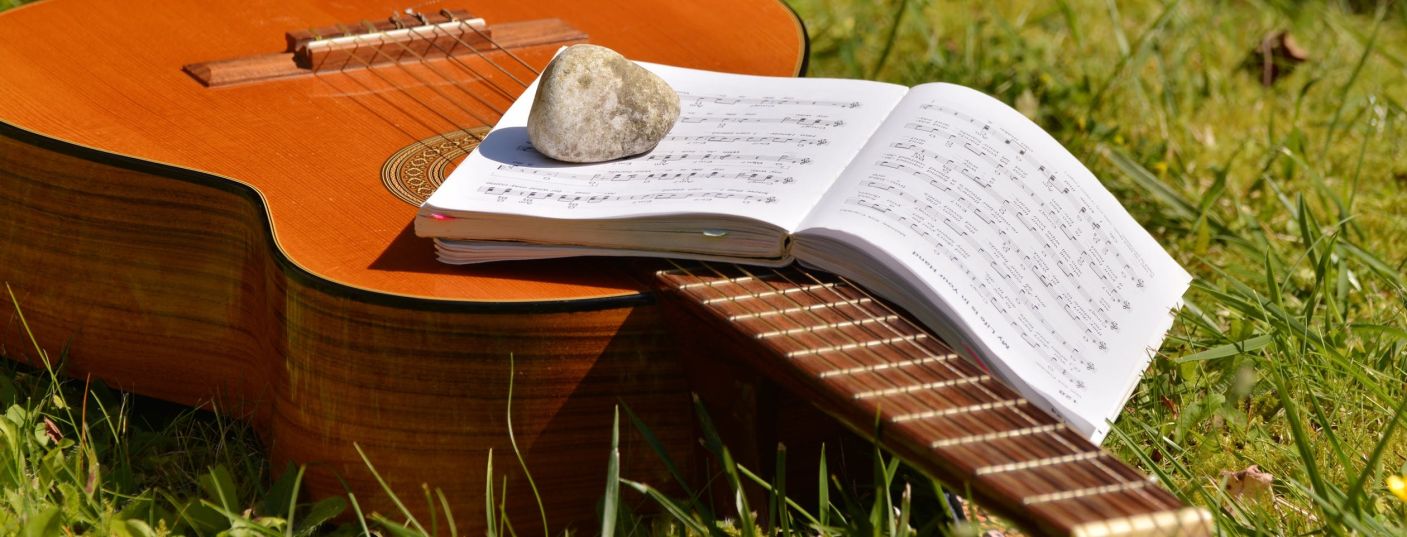
Writing to a Title
Writing to a title is a tried and true technique for inspired, interesting, and cohesive songwriting. Here, we dig into the details of how to do it right.
When it comes to songwriting, writing to a title is the topic of several courses, books, and countless conversations. In Nashville, it’s almost a given that you’ll be writing to a title and songwriters there have collections of titles just waiting to come to life in future collaborations. So, what’s all the hype about and how can you use this technique in your own writing? Let’s take a closer look at why writing to a title can be so effective, and help you avoid the mire of writer’s block.
Titles are song DNA
As long as you’ve got a good title, you’ve got a headstart on writing a good song. A title can say a whole lot with just a few words. Some titles imply a tonality (major or minor), some give us an impulse to move quickly, and others slowly. Titles can give us different meanings depending on how we look at and interpret them, and some titles give us an impression like we’re headed for something big.
When you’ve chosen a title, think about what it’s telling you. What are the possible stories behind the title and how could that narrative unfold in song form? What type of energy does it imply musically?
As Pat Pattison says, “Titles are song DNA.” Inside of a title you can find the blueprint for something really compelling if you look closely enough and dig deep. By entering a song this way, you’re setting yourself up for cohesive and connected writing.

Titles can tell us a lot without saying very much
Titles give you rhythm and motif
Everyday language has a songlike quality to it. When we’re asking a question, our voices naturally sing a melody which tilts upwards, begging a response. When we want someone to understand key things, we stress and emphasize words so they stick out from the others, making sure our listeners understand what we mean. This natural melodic and rhythmic tendency that language inherently has can give us the building blocks of our central motifs.
Let’s say we’re writing a song and the title we’ve decided to use is, "I’ll never love again." Say it aloud. Can you hear the music inside the phrase? If we take a look at the stress patterns we’ll find a rhythmic figure: I’ll NEver LOVE aGAIN. Ne, Love, and Gain are all stressed, leaving I'll, er and a, unstressed. Say it over and over a few times until it starts falling into place. Once you’ve got the rhythmic components extracted, set them to a fitting melody, and voila, there’s your main motif for the song.
Motifs are the building blocks of song sections. They are the smallest identifiable pieces of a composition and most great songs contain a single motif in each song section. Once you have it, you can write around and toward that motif, as well as create another one for a contrasting song section.

Look and sound familiar?
Titles evoke sounds
Sticking with the same title, “I’ll Never Love Again,” we’re given a lot of vowel sounds and places to look for potential rhymes. To start, we can extract “ever,” “uv,” and “en” from the ends of three words with stressed syllables in them.
Armed with those sounds, we can search our rhyming dictionary for words and ideas that will help us sculpt and lead a listener to our title. Searching for rhymes and language is a form of pre-writing that can set you up for success. Often we settle for the first thing that comes to us instead of searching for the myriad possibilities that lie on the other side of, “No, I can do better than that.” Use titles to give you clues and places to search, both musically and lyrically.

Feel the feels, and get your point across
Titles bring clarity
For those of us who use songwriting as a form of therapy or catharsis, we might not be thinking about a title because we’re focused on a feeling. When we enter a song through an emotion, things can get cloudy (just like emotions!) because we weren’t thinking about our central statement or where we were headed...We were too caught up in the feels. When you start with a title you already have the main point hammered out, and it can be an effective way of corralling your thoughts into a slick container, ready for the emotions pouring out and into.
This is really where we draw the line between writing for "us" and writing for "them." This is where the craft of songwriting comes into play and we’re thinking about our listener just as much as we’re thinking about our own need to connect with a feeling.
True north
A title can give you direction as if it were a compass pointing you towards a destination far off in the distance. If you let your title lead the way, you’ll get to where you’re headed and it will likely be the shortest path to getting there.
Take these tips and see where your titles lead you.


